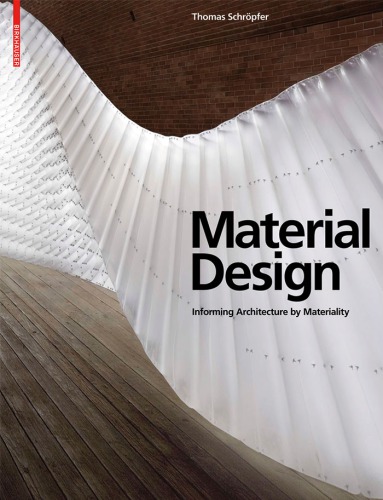

Most ebook files are in PDF format, so you can easily read them using various software such as Foxit Reader or directly on the Google Chrome browser.
Some ebook files are released by publishers in other formats such as .awz, .mobi, .epub, .fb2, etc. You may need to install specific software to read these formats on mobile/PC, such as Calibre.
Please read the tutorial at this link: https://ebookbell.com/faq
We offer FREE conversion to the popular formats you request; however, this may take some time. Therefore, right after payment, please email us, and we will try to provide the service as quickly as possible.
For some exceptional file formats or broken links (if any), please refrain from opening any disputes. Instead, email us first, and we will try to assist within a maximum of 6 hours.
EbookBell Team

0.0
0 reviewsThe approach of "Informing Architecture by Materiality" opens the way to an innovative use of materials in the design professions. Taking material qualities and properties such as texture, elasticity, transparency and fluidity as a point of departure, the concept described and employed here transcends the conventional definitions of building materials. Instead, the focus is on a multitude of material operations, like folding and bending, carving and cutting, weaving and knitting, mirroring and screening. The featured design strategies and methods address established and "new" materials alike. They are applied both to the scale of the detail and the entire building. The examples comprise prototype structures as well as large building projects. Nine chapters deal with surfaces and layers, joints and juctions, weaving and texturing, nanoscale transformations, responsiveness, the integration of ephemeral factors like wind and light as well as material collections providing professional resources. Written by reknowned experts in this field, the book features many examples from international contemporary architecture. The introductory part provides the conceptual background, while a final chapter describes consequences for pressing issues of today, like sustainability or life cycle assessment.